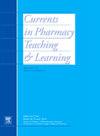The educational effect of incorporating an online context into medication instruction training in clinical preparation education
IF 1.4
Q3 EDUCATION, SCIENTIFIC DISCIPLINES
引用次数: 0
Abstract
Introduction
The spread of the coronavirus disease (COVID-19) has accelerated the provision of medical services using video conferencing systems. Hence, educational institutions are required to develop human resources that can utilize Internet communication technology in clinical settings.
Objectives
This study aimed to create a learning program incorporating an online video conferencing environment into medication counseling clinical preparatory education for pharmacy students and measure its educational effectiveness. Specifically, we compared pharmacy students' medication instruction abilities using an online video conferencing system and the characteristics of face-to-face and online medication instruction before and after the program.
Setting
Fourth-year students of the School of Pharmacy at Shujitsu University in Okayama Japan for the academic year 2023–2024.
Measurement
To evaluate the program, we compared changes in learners' abilities and the characteristics of face-to-face and online medication instruction as recognized by the learners.
Results
Participants' abilities improved after completing the program. A characteristic of online medication counseling using a videoconferencing system is that, as in the real world, it is more difficult to maintain a patient's concentration than in face-to-face counseling. However, sharing clinical test results and checking the medication status may be more useful online than during face-to-face counseling.
Conclusion
Our clinical preparatory education program for medication instruction, which incorporates an online context into learning strategies, has been shown to closely mimic real-life online medication instruction.
在临床准备教育中将在线教学纳入药物指导培训的教育效果
新型冠状病毒病(COVID-19)的传播加快了使用视频会议系统提供医疗服务的速度。因此,教育机构需要培养能够在临床环境中利用互联网通信技术的人力资源。目的建立一套将在线视频会议环境融入药学专业学生药物咨询临床预备教育的学习方案,并衡量其教学效果。具体而言,我们比较了课程前后药学专业学生使用在线视频会议系统的用药指导能力以及面对面和在线用药指导的特点。日本冈山大学药学院2023-2024学年的四年级学生。为了评估该计划,我们比较了学习者能力的变化以及学习者认可的面对面和在线药物指导的特点。结果完成课程后,参与者的能力有所提高。使用视频会议系统的在线药物咨询的一个特点是,与在现实世界中一样,保持患者的注意力比面对面咨询更难。然而,在线分享临床测试结果和检查药物状态可能比面对面的咨询更有用。结论:我们的临床药物指导预备教育项目,将在线环境融入学习策略,已被证明与现实生活中的在线药物指导非常接近。
本文章由计算机程序翻译,如有差异,请以英文原文为准。
求助全文
约1分钟内获得全文
求助全文
来源期刊

Currents in Pharmacy Teaching and Learning
EDUCATION, SCIENTIFIC DISCIPLINES-
CiteScore
2.10
自引率
16.70%
发文量
192
 求助内容:
求助内容: 应助结果提醒方式:
应助结果提醒方式:


